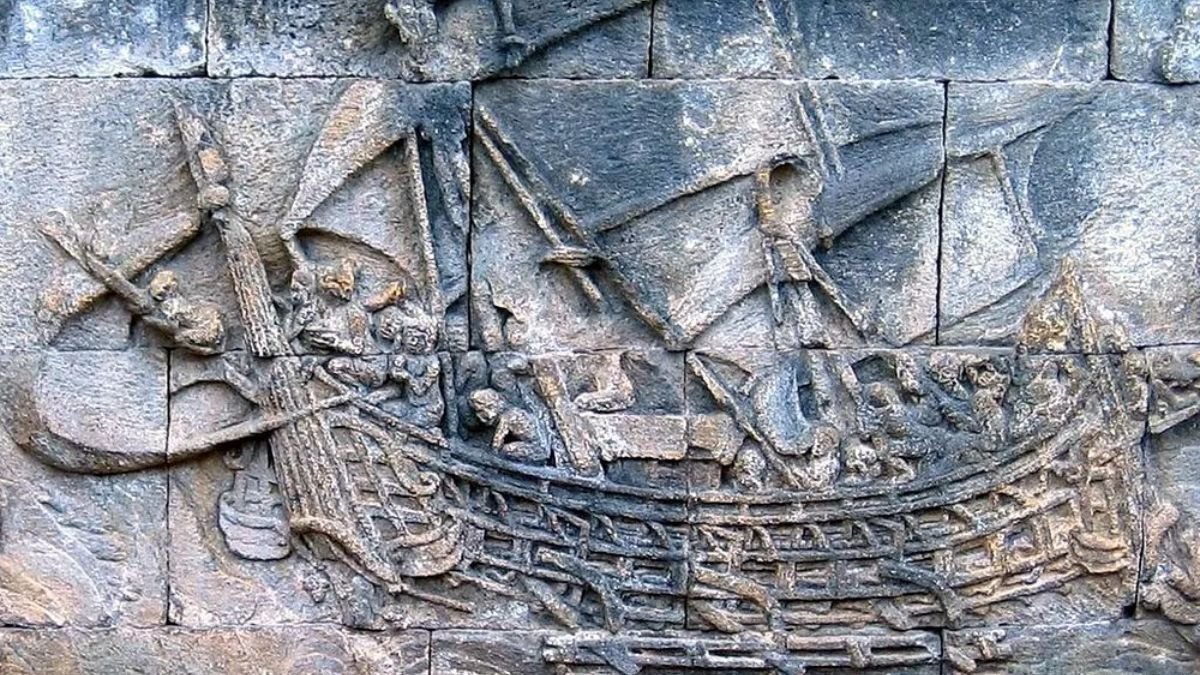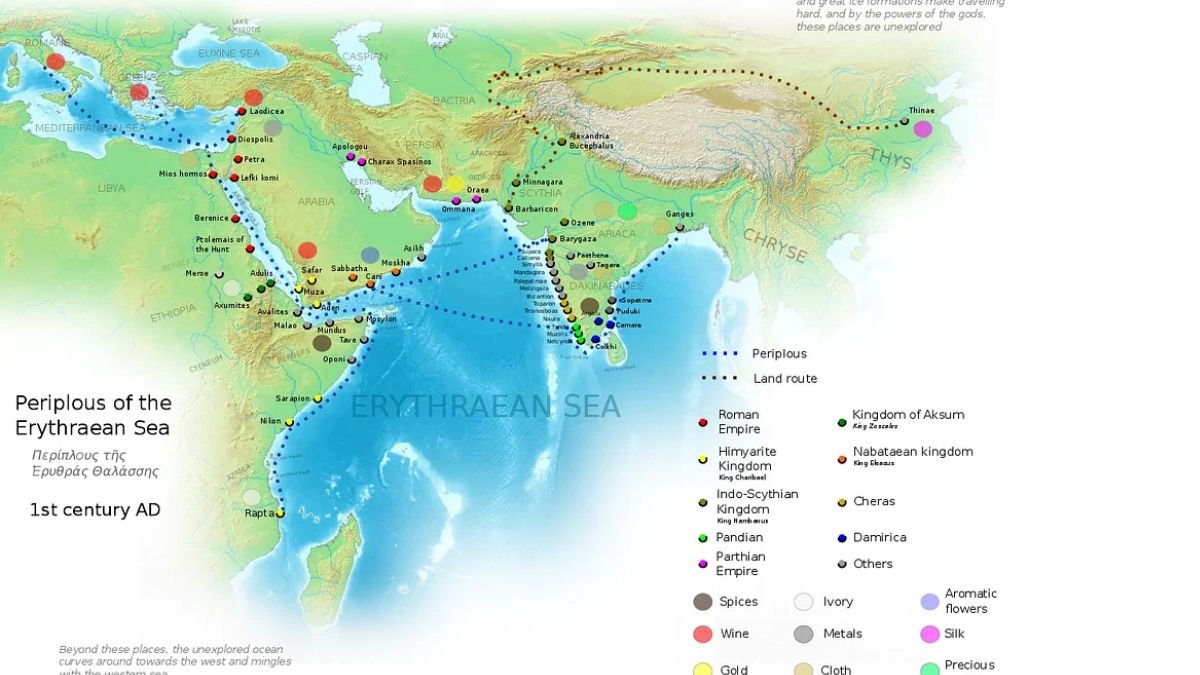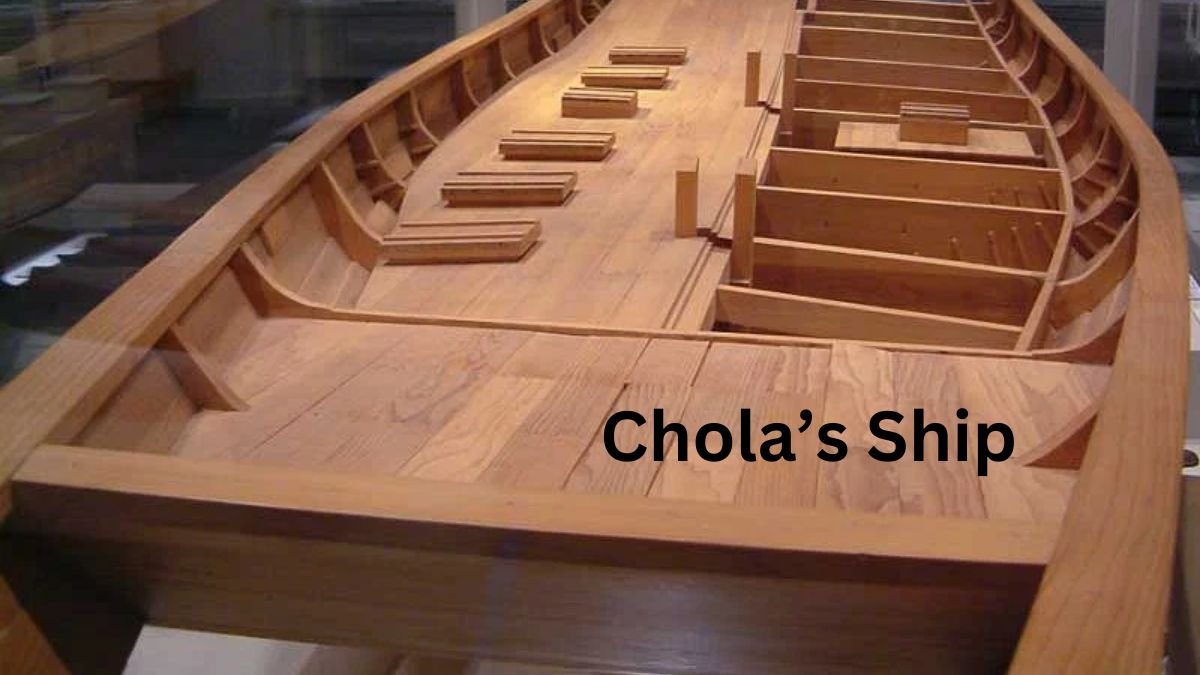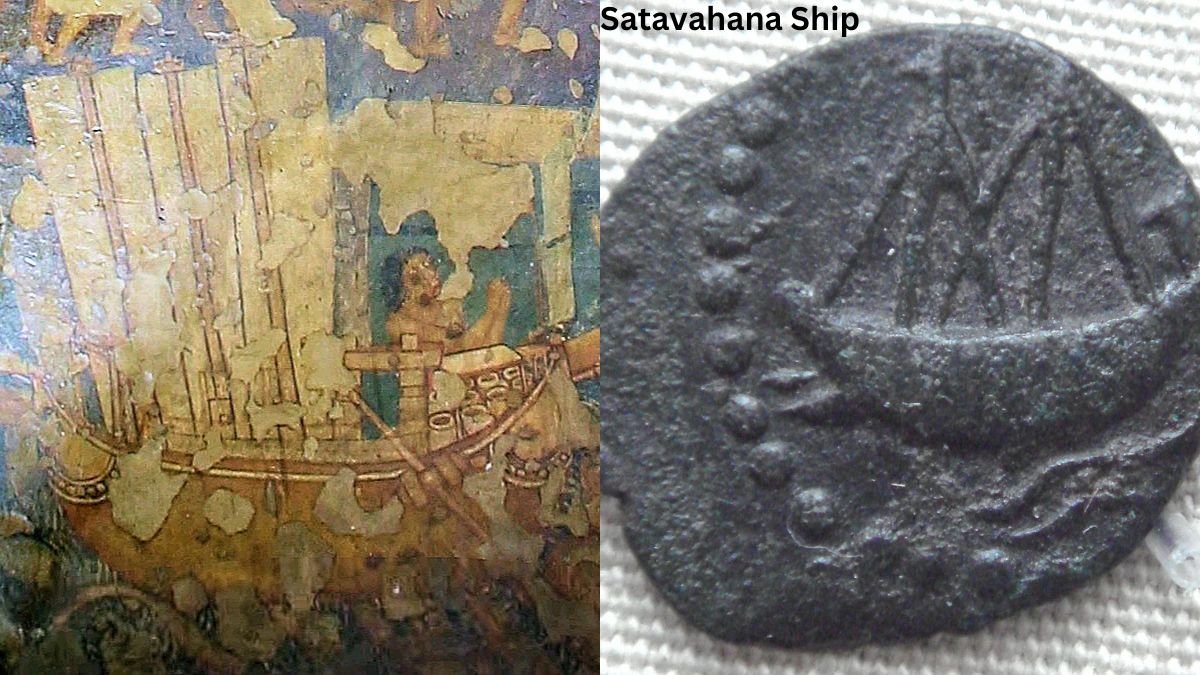In ancient India, the navy had three essential functions. Firstly, it served as a means to transport troops to far-off battlefronts, aiding in military campaigns. Secondly, it actively engaged in warfare, safeguarding the nation’s interests on the seas and navigable rivers. Lastly, and perhaps most importantly, the navy played a crucial role in protecting the kingdom’s maritime trade routes.

Naval warfare and history
India’s flourishing trade relationships with regions like Egypt, West Asia, Greece, and Rome were pivotal to the growth and development of naval forces along the western coastline, which faced the Arabian Sea. Additionally, various dynasties governing different parts of India recognized the significance of maintaining naval fleets to safeguard the trade conducted through major rivers like the Ganga. This dual role of the navy, as both a military force and a guardian of trade routes, was integral to ancient India’s maritime history.
On the eastern coast, overlooking the Bay of Bengal, the maritime endeavors of ancient India often resulted in colonization missions to Southeast Asia. The naval forces of the South Indian kingdoms were primarily oriented towards conducting expeditions and invasions in regions like Sri Lanka, which was separated from India by the Palk Straits. It’s worth noting that naval battles, in comparison to land conflicts, were relatively infrequent in ancient India.
The preference among ancient Indians was predominantly for land-based warfare, with sea battles holding lesser significance in their military strategies. However, there were exceptions when the destruction of the enemy’s naval power became a critical objective in certain circumstances.
The Strategic Significance of Ancient Indian Naval Power
Ancient India’s naval capabilities held significant strategic importance, primarily focusing on safeguarding trade routes and facilitating troop movements. While Kautilya, a prominent figure in the 4th century BCE, extensively detailed land warfare, espionage, and siege tactics in his renowned work, the Arthashastra, naval warfare remained conspicuously absent from his discourse.
In the Mauryan Empire, which reigned from 321 BCE to 297 BCE, the war office comprised six boards, with the first board responsible for shipping affairs, led by the Navadhyaksha or Superintendent of Ships. The Arthashastra tasked the Navadhyaksha with financial oversight related to navigation and maintaining security over various water bodies, without assigning any direct military role. Curiously, historical records do not shed light on any naval battles involving Magadha (6th century BCE – 4th century BCE), the Mauryas, or subsequent dynasties such as the Guptas (3rd century CE – 6th century CE).
The paramount objective of these naval forces was the protection of maritime trade, merchant vessels, port towns, and overall maritime security. Any naval operations, if conducted, were likely small-scale and confined to inland rivers, given that most of these kingdoms primarily engaged in trade via river routes.
Dynasties based in landlocked northern or eastern India did not appear to employ their navies aggressively or for territorial conquest. While ships were incorporated into the Gupta army, their usage remained relatively limited and less extensive compared to land forces, primarily focusing on island conquests, as presumed for the campaign of Gupta Emperor Samudragupta (335 CE – 380 CE) or engagements with seafaring peoples, similar to the Satavahanas (1st century BCE – 2nd century CE).
In contrast, the situation was distinctly different in western, southern, and coastal eastern India. These regions, owing to their coastal locations, heavily relied on maritime trade, necessitating the establishment of naval forces that played a pivotal role in warfare. For these dynasties, the navy formed an integral component of their military establishment alongside their land forces. Consequently, these coastal regions and the adjacent high seas bore witness to the most significant naval warfare in ancient India.
The primary motive behind such naval confrontations was the capture of the highly profitable foreign trade of the adversary, requiring the elimination of their naval protection. Thus, naval warfare complemented land warfare, becoming essential for defeating seafaring adversaries.

Prominent dynasties known for their well-developed navies included:
Mauryas (4th century BCE – 2nd century BCE)
Pallavas (3rd century CE – 9th century CE)
Cholas (4th century BCE – 13th century CE)
Early Cheras (3rd century CE – 9th century CE)
Later Cheras or Kulashekharas (9th century CE – 12th century CE)
Chalukyas of Vatapi (6th century CE – 8th century CE)
Palas (8th century CE – 12th century CE)
Maritime History Along India’s Coasts
Western Coast:
Local dynasties, like the Mauryas of Konkan, recognized the strategic significance of maintaining a navy and coastal forts on the western coast. The Early Cheras, realizing that most international trade ports, particularly those connecting with Rome, fell within their territory, developed a formidable naval fleet. This fleet played a pivotal role in combating foreign pirates and rival kings who supported them. The Later Cheras, or the Kulashekharas, continued this naval tradition, stationing their war fleet near Kandalur Salai (modern-day Valiasala, Kerala state), while heavily fortifying port towns such as Vizhinjam (present-day Vizhinjam, Kerala state). The Vatapi Chalukyas maintained a vast fleet primarily used for transporting troops to land battlefields.
Southern & Southeastern Coast:
The Cholas eventually emerged as the foremost naval power in ancient India. Starting with Raja Raja I (985 CE – 1014 CE), they achieved significant naval victories, including defeating the Kulashekhara king Bhaskara Ravivarman I’s fleet and conquering islands like Lakshadweep and the Maldives. They also conducted overseas expeditions to Sri Lanka and Southeast Asia.
South Indian kings often intervened in Sri Lankan dynastic disputes, deploying naval expeditions across the Palk Straits to support claimants to the throne. The Pallavas utilized their harbor at Mamallapuram (present-day Mamallapuram or Mahabalipuram, Tamil Nadu state) for similar purposes. The Cholas went beyond supporting and conquering northern Sri Lanka, establishing it as a province called Mummadicholamandalam.

Eastern Coast:
Dynasties ruling the eastern coast constructed war fleets and undertook maritime expeditions, with the navy playing a pivotal role in warfare. The Vatapi Chalukyas’ destruction of the Konkan Mauryas’ fleet and capture of an island fort significantly weakened the latter. The Kulashekharas altered their strategy against the Cholas, shifting their focus to land warfare and employing innovative tactics like suicide squads to counteract the Cholas’ naval advantage.
However, the presence of a formidable navy did not always ensure victory. Despite being a maritime power, the Cholas faced numerous defeats on land at the hands of land-based powers like the Rashtrakutas (8th century CE – 10th century CE) and the Kalyani (Western) Chalukyas (10th century CE – 12th century CE), as these conflicts occurred beyond the Chola naval sphere of influence.
Ships & Crew:
Ancient Indians possessed a deep understanding of shipbuilding materials, various ship classes, and their properties. The Yuktikalpataru, authored by King Bhoja (c. 1010 CE – 1055 CE) of Malwa, detailed these aspects. Notably, it mentions a vessel known as Agramandira, designed with cabins towards the prows, suitable for naval warfare. Ancient Indian ships were single, double, or triple-masted, with the mast referred to as Naudandaka. Shipbuilding harbors were known as Navataksheni. These vessels were substantial, equipped with up to a hundred oars to transport troops across significant nautical distances.
The Arthashastra mentioned large boats (mahanavah) with a captain (sasaka), a steersman (niyamaka), and support staff. While these terms were used for large boats, it is likely they applied to naval ships as well, with varying numbers of oarsmen based on the ship’s size and warriors prepared for combat.

Naval Battles:
Direct references to the conduct of naval battles in ancient India are scarce. Drawing from available evidence and general patterns of ancient Indian warfare, some assumptions can be made. Ships likely carried warriors armed with period-standard weapons such as swords, javelins, maces, and spears, with archers prominently engaged in battle, shooting fire arrows. The Ramayana mentions a fleet of 500 ships, fully rigged to obstruct the enemy’s passage.
When enemy ships came within range, soldiers from both sides would engage in hand-to-hand combat and attempt to board the enemy vessel, seeking to disable it and return to their own ship. The primary goal was the destruction of enemy ships, with no mention of capture. Destruction was achieved by either breaking the ships or setting them ablaze. While there is no explicit mention of war engines, some form of contraption might have been used to hurl stones at enemy ships.
At the first battle of Kandalur Salai, Raja Raja I Chola is explicitly credited with killing Kulashekhara or Chera warriors, splitting an enemy naval vessel in two, and destroying several boats.

Legacy:
Naval developments along the west coast persisted into the medieval and colonial periods, with these dynasties offering formidable resistance to European powers like the Portuguese and Dutch. However, British naval superiority led Indian powers to shift their focus to land-based conflicts, marking the decline of the indigenous Indian navy. Nevertheless, the maritime traditions established during ancient times continued to influence the development of the navy in independent India. The enduring legacy of these ancient navies underscores their historical importance and impact on naval warfare.
FAQs
1. Q: Which ancient Indian dynasties had notable navies?
Ans: Prominent ancient Indian dynasties with notable navies included the Mauryas, Cholas, Pallavas, Early Cheras, Later Cheras (Kulashekharas), Chalukyas of Vatapi, and Palas.
2. Q: What were the main purposes of ancient Indian navies?
Ans: Ancient Indian navies primarily served to protect maritime trade, merchant ships, and coastal territories, as well as to engage in naval warfare when necessary.
3. Q: Were there any significant naval battles in ancient Indian history?
Ans: While records of specific naval battles are limited, conflicts between Indian dynasties and foreign powers often involved naval engagements, such as those between the Cholas and the Kulashekharas.
4. Q: How did ancient Indians build and maintain their naval fleets?
Ans: Ancient Indian shipbuilding involved knowledge of various wood types and properties. Ships were typically single, double, or triple-masted and equipped with numerous oars. Navies had dedicated harbors for ship construction and maintenance.
5. Q: Did ancient Indian navies influence trade and foreign relations?
Ans: Yes, ancient Indian navies played a crucial role in facilitating international trade and diplomatic relations, particularly in regions like Southeast Asia and Sri Lanka.
6. Q: How did naval warfare tactics differ from land warfare in ancient India?
Ans: While specifics are limited, naval warfare tactics likely involved standard weapons like swords, javelins, and archery. The main goal was to destroy enemy ships, and fire arrows and hand-to-hand combat were likely strategies.
7. Q: What led to the decline of ancient Indian navies?
Ans: The decline of indigenous Indian navies began with European colonial powers like the Portuguese and Dutch. British naval superiority further marginalized Indian naval forces.
8. Q: How has the legacy of ancient Indian navies impacted modern naval traditions in India?
Ans: The enduring legacy of ancient Indian navies contributed to the development of modern Indian naval traditions, emphasizing maritime security and trade protection.
9. Q: Are there any archaeological findings related to ancient Indian naval history?
Ans: Archaeological discoveries, such as shipwrecks and coastal fortifications, have provided valuable insights into ancient Indian naval history.
10. Q: Were there any famous naval commanders or leaders in ancient India?
Ans: Leaders like Raja Raja I Chola are known for their naval exploits and contributions to ancient Indian naval history.